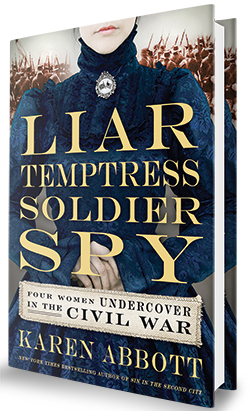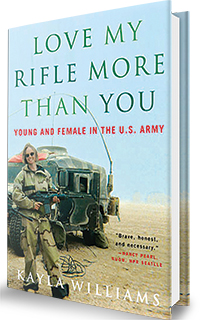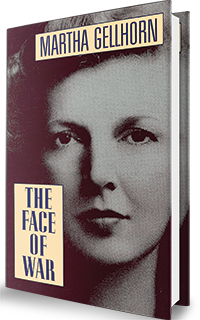Say “city at war” and most people think of London during the Blitz or now Baghdad. We rarely stop to remember that in the War Between the States, Washington was partially surrounded by enemy territory—at least nominally: The District’s location below the Mason-Dixon Line, across the Potomac River from Robert E. Lee’s estate, meant that its Northern government was beset with Southern sympathizers.
One of the most sympathetic inhabitants was Rose O’Neal Greenhow, who appears in Karen Abbott’s marvelously readable Liar, Temptress, Soldier, Spy: Four Women Undercover in the Civil War. The complicated, formidable widow of a State Department bureaucrat, Greenhow was close friends with South Carolina senator John C. Calhoun, who helped ignite her devotion to the Southern cause. In 1861, she was recruited by turncoat Army captain Thomas Jordan, who gave her a code key and drew her home near Lafayette Square—“within easy rifle range of the White House”—into a citywide spy network. Which of the roles in the book’s title Greenhow corresponds to remains unclear, because she seems to fit all four. Her every action for years was a lie: She tempted dozens of men into her web, managed a ring of armed colluders, and worked secret messages into her cross-stitch.
This ambiguity, in fact, extends to all of Abbott’s conspirators. Belle Boyd, a pistol-packing Virginia debutante, lied to the Union officer she hoped to marry about her true loyalties; tempted him and other soldiers with her brazen, strange hybrid appearance (she often wore skirts topped with a military jacket and a headdress festooned with the Confederate stars); shot and killed scouts and soldiers; and hid notes and Confederate money in her hoop skirt.
Not all of the operatives Abbott writes of are either Confederates (Elizabeth Van Lew, who trained her freewoman servant Mary Jane as a covert spy for the Jefferson Davis household, raised the US flag over Richmond after it fell to Union forces in 1865) or Southern belles. One of the estimated 400 women who concealed their sex to fight in the war, Emma Edmondson, originally of Magaguadavic, New Brunswick, joined the Union Army as Private Frank Thompson of Company F, Second Michigan Infantry. She served as a medic and volunteered as a federal spy, often disguising herself in skirts—a woman impersonating a man impersonating a woman.
Each woman’s story has been told before, but by weaving their tales, Abbott demonstrates how crucial women were to both sides, a facet that’s easy to miss in many Civil War chronicles, going back to Ken Burns’s PBS series, in which women served mostly as lugubrious onlookers.
For Abbott’s women, Washington was the crucible in which their plots were carried out and where their stories—so entertainingly intertwined—loosely connect, such as when Boyd is incarcerated in the same place as Greenhow, DC’s Old Capitol Prison. For local readers, the background gives a realistic luridness to tales of lives that were stranger than fiction.
Further Reading:
This article appears in the September 2014 issue of Washingtonian.

Publisher:
Harper
Price:
$17.70






















